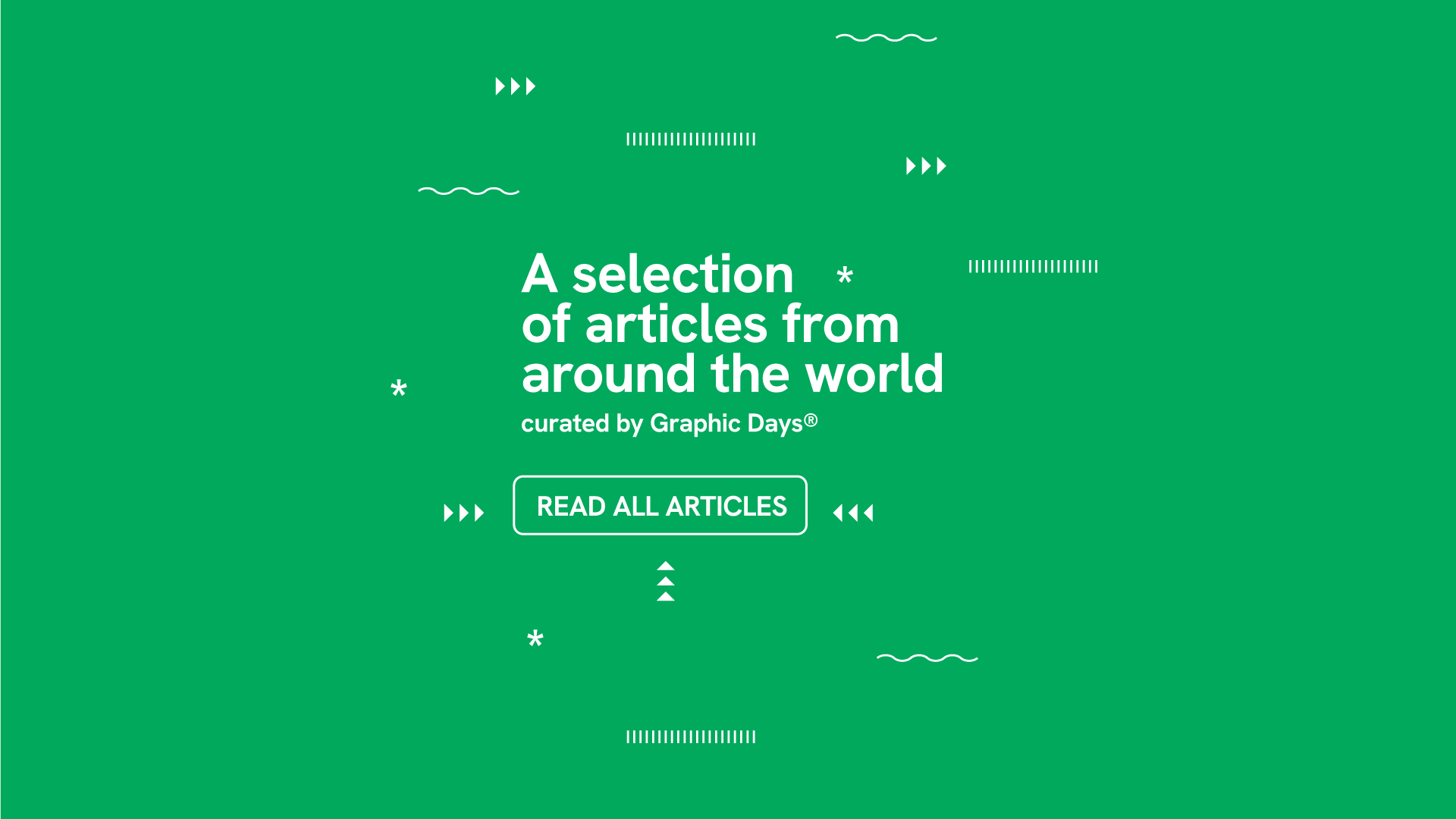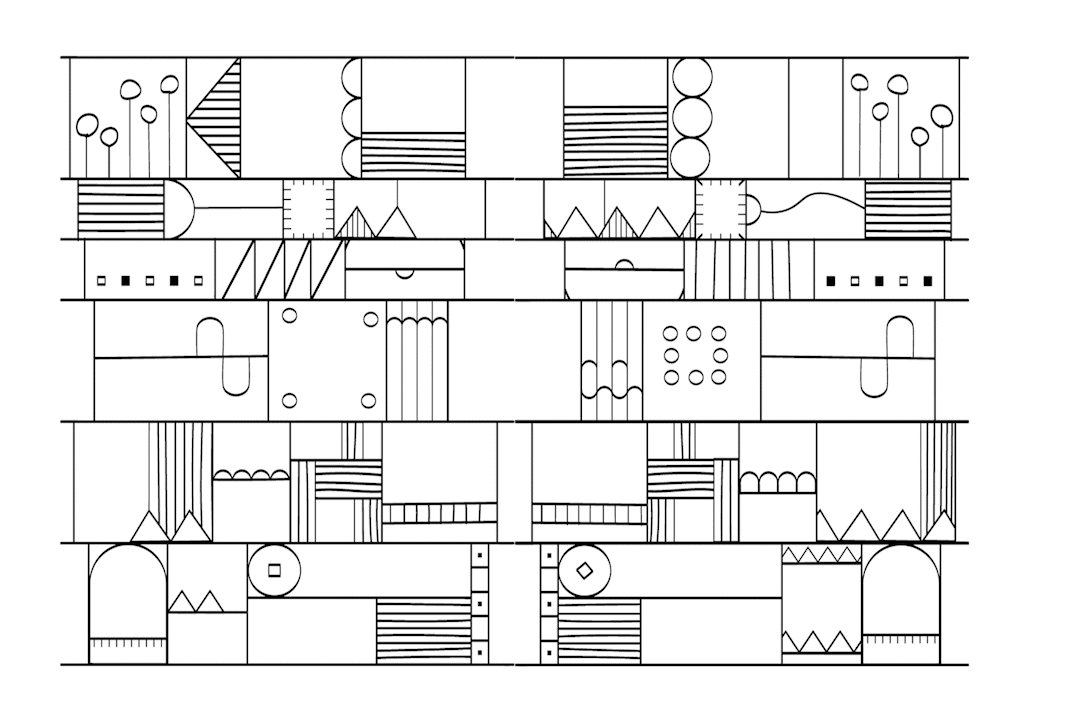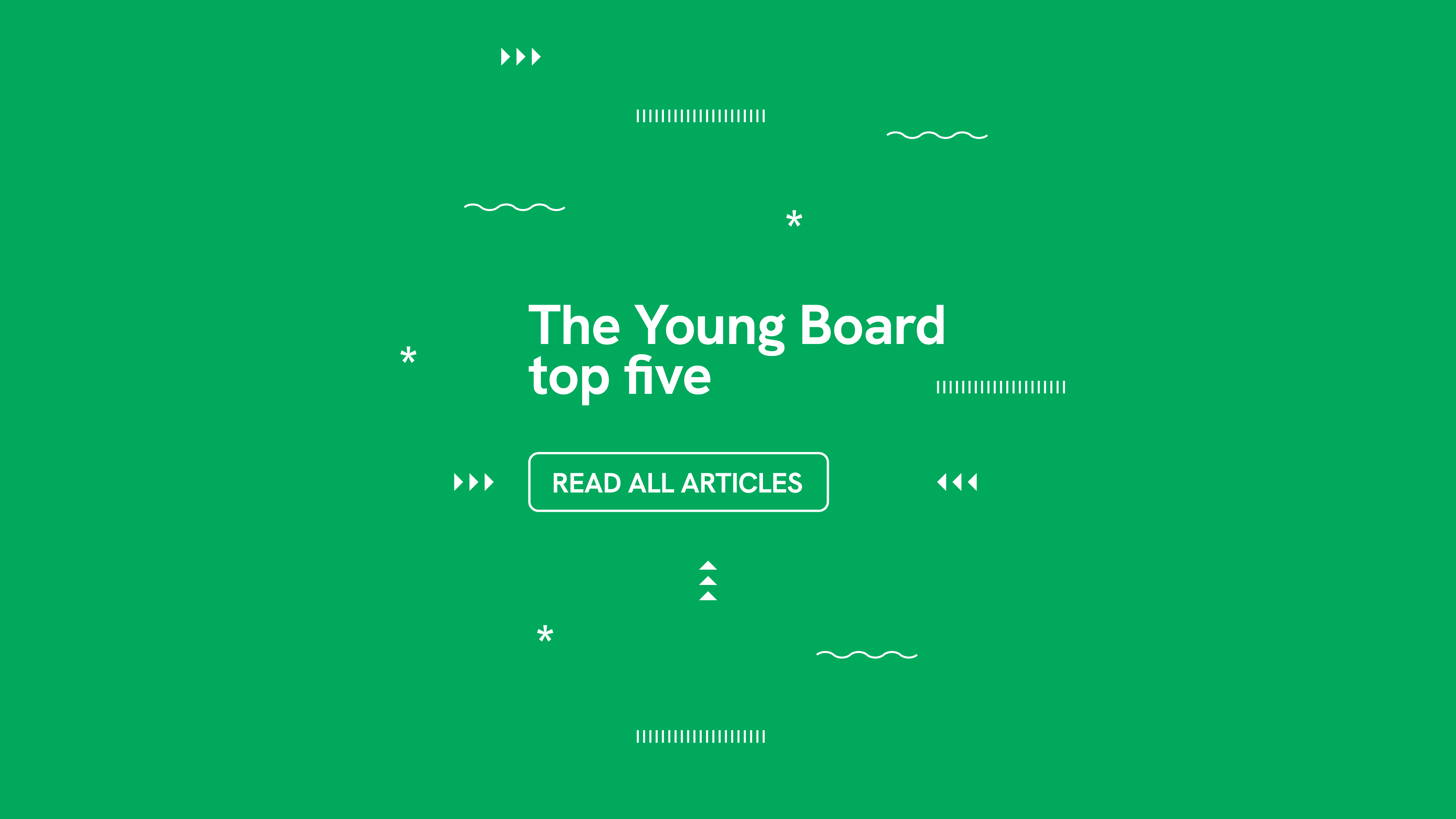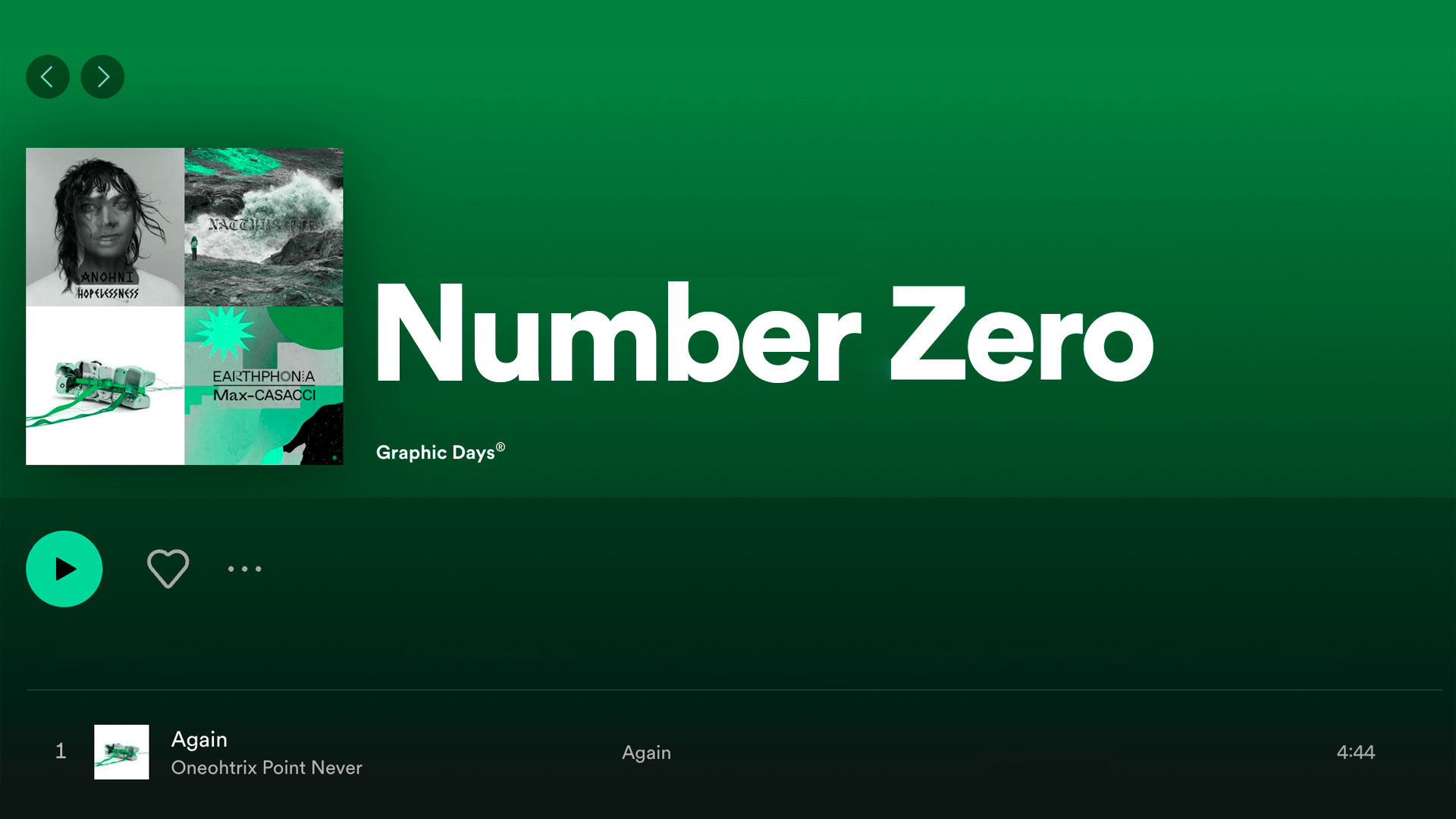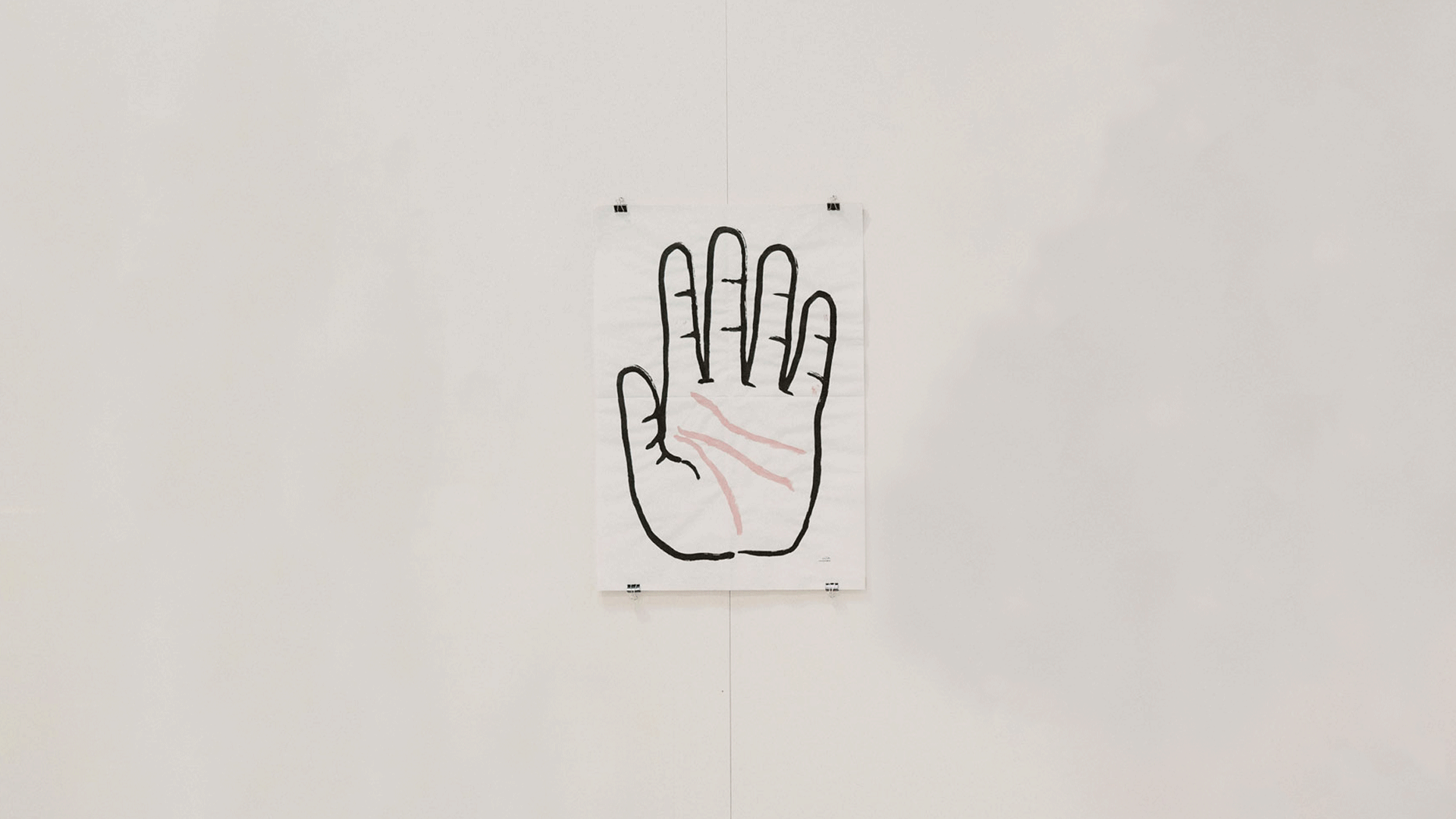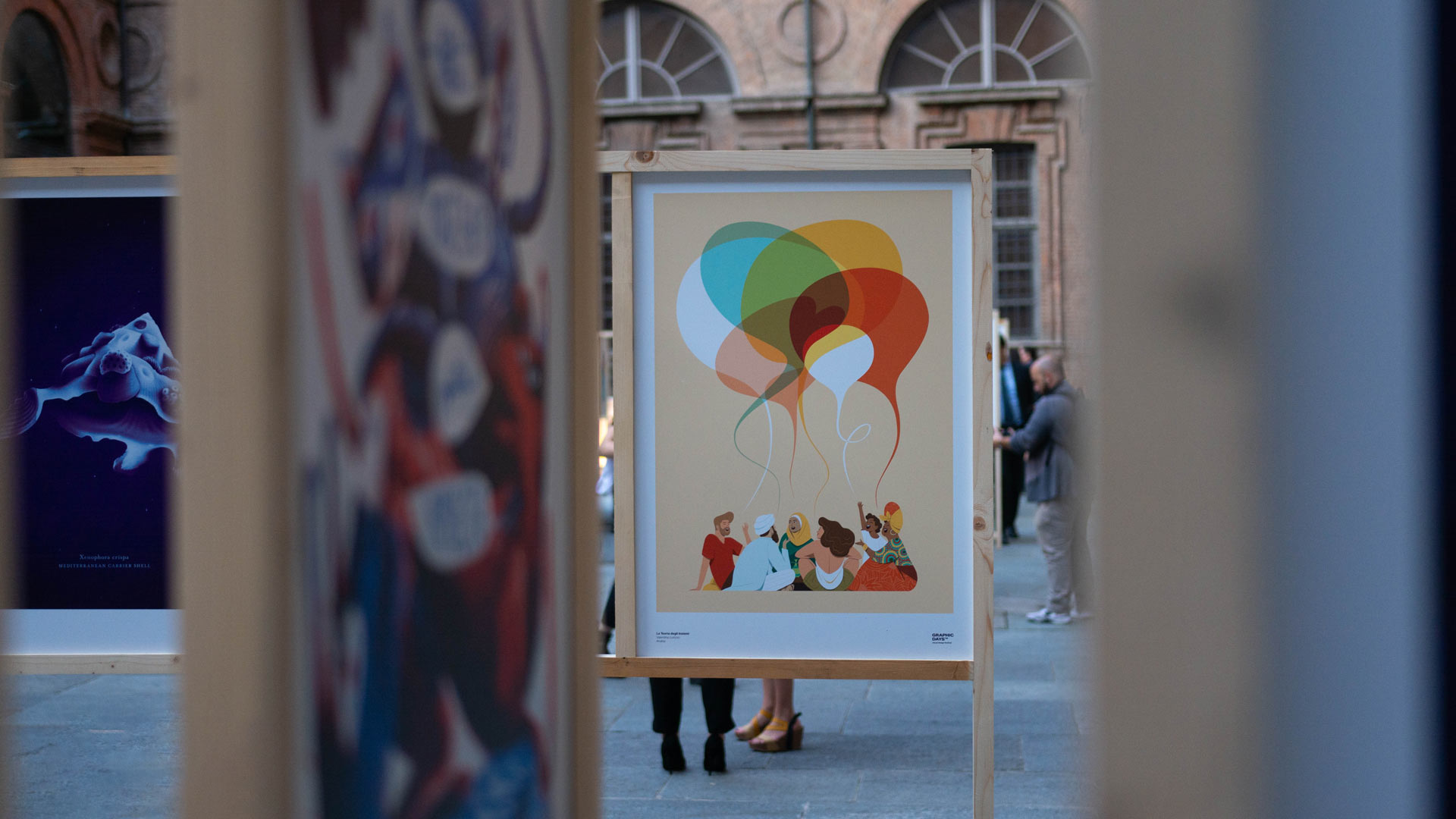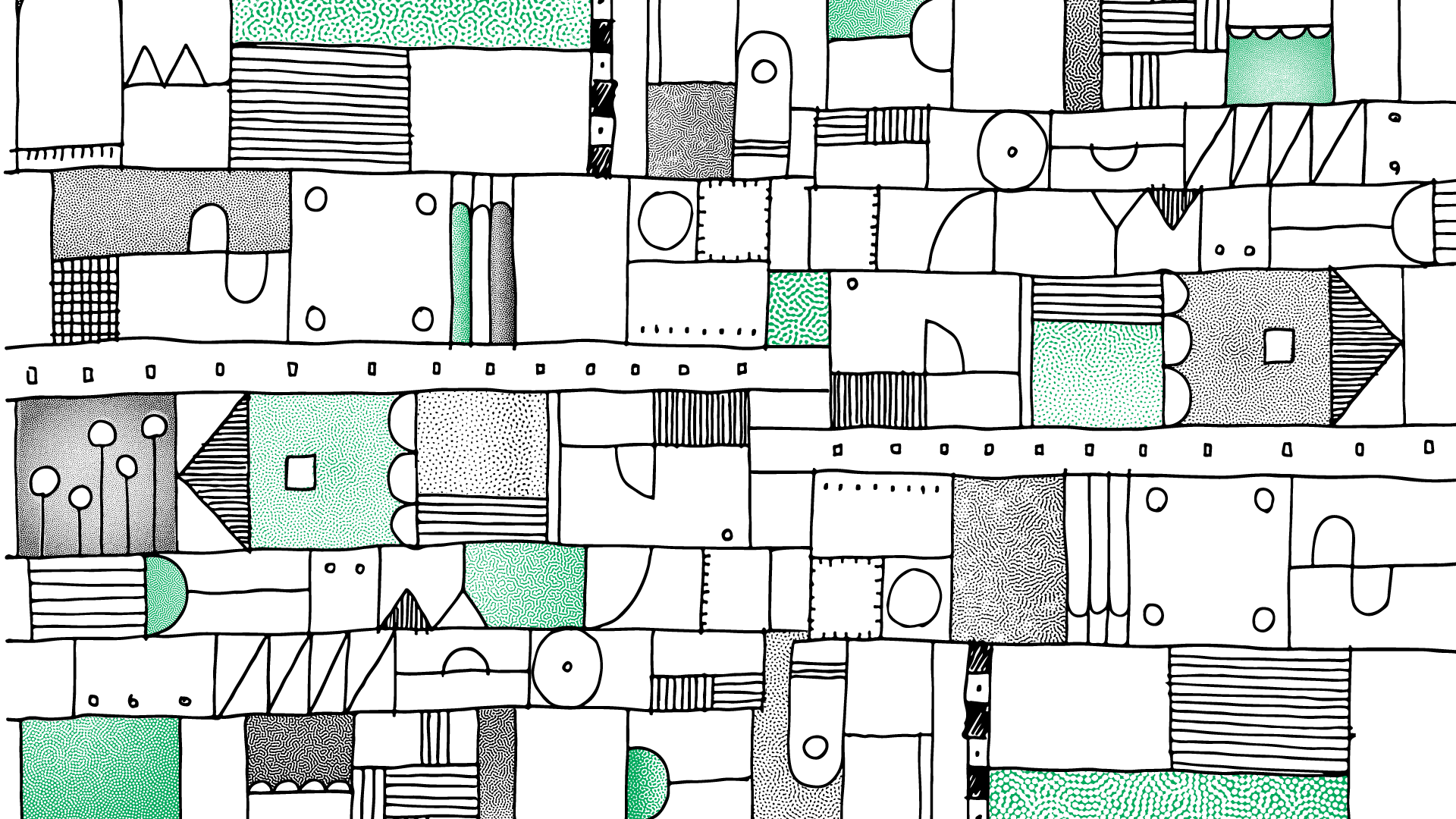
Corrente is a fanzine that deals with contemporaneity, aware of the most burning issues and which, like the current of the river, will not stay still, but will touch on different topics, with a plural approach, open to contamination and many currents of thought. A fanzine that, sometimes, like electric current, will give a small shock to remember that certain topics can no longer be postponed, even if this means going against the current.
Can design be good?
“There are three responses to a piece of design – yes, no, and WOW! Wow is the one to aim for.”
With these words Milton Glaser, the creator of one of the most famous and iconic logos in history, the New York City logo, defines visual design. Colors, shapes, typography and images capture attention and help bring the audience closer and convey a message.
In the hands of social designer, visual design becomes the means with which to create accessible contents, simplifying complex concepts and creating effective narratives, and with which to start a dialogue with the community, encouraging active involvement and stimulating reflection on topical issues. Not only information therefore, but also participation.
Corrente was born with this attitude, a fanzine that deals with contemporaneity, aware of the most burning issues and which, like the current of the river, will not stand still, but will touch on different topics, with a plural approach, open to contamination and to many currents of thought. And which, sometimes, like electric current, will give a small shock to remember that certain issues can no longer be postponed, even if this means going against the current.
From climate change to LGBTQAI+ issues, from cyberbullying to fake news, from multiculturalism to policies for public space: these are just some of the issues that will be addressed in these pages by Graphic Days®, the international project that talks about visual design and its contaminations at 360 degrees through an annual festival and educational and cultural activities throughout the year in collaboration with the creative printing laboratory Print Club Torino.
Corrente is created together with the Graphic Days® Young Board, a group of students passionate about visual and social design, who support the Graphic Days® team in researching and identifying the most burning issues in public debate. The editorial activity takes place within the newly reopened Geisser library and draws inspiration from the rich heritage of magazines that can be consulted in Turin’s civic libraries. Ideas and reflections that we hope every reader will want to delve into in their local library.
However, the Geisser library will not only be the place where ideas will develop, but also where these will be transformed into reality: in fact, the fanzine, created with the Risograph technique, will be printed, cut and bound directly in the library spaces, where it will be possible also to take part in laboratory activities. In particular, each issue will host the research activity on the topic carried out by a school class, as the outcome of a path developed in the Geisser spaces.
Graphic Days®
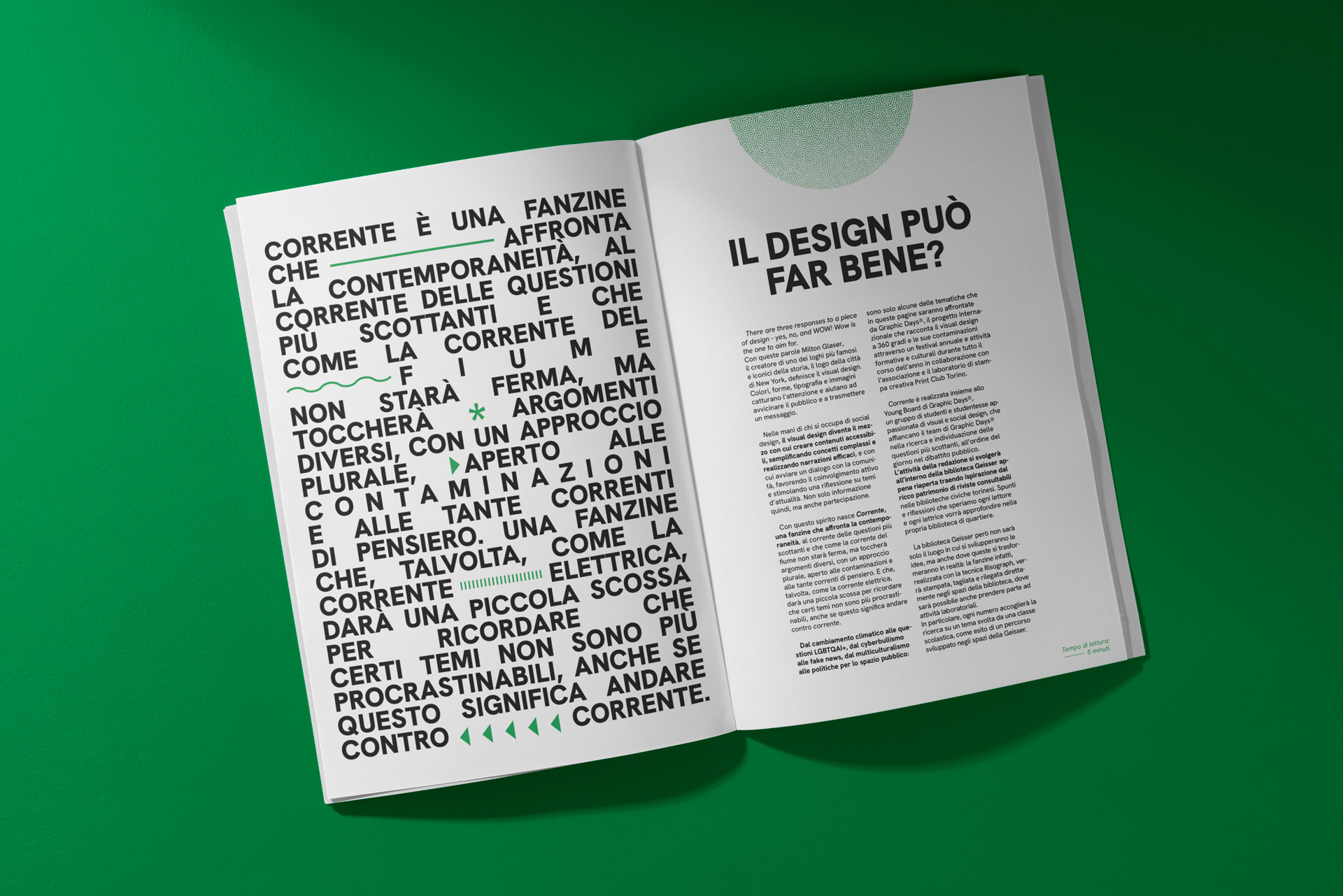
We mix design and people
Every great transformation is the result of many small individual variations, apparently insignificant like the grains of sand in the gears. And it is the individual that social designers turn to when they deal with social issues to stimulate change in society.
One of the topics on the agenda is the climate: that global warming is a reality is perhaps known by many, that everyone must do their part a little less. The Climate Crisis font designed by the Finnish newspaper Helsingin Sanomat was therefore created with the aim of making the community responsible for the melting of glaciers.
In addition to the causes, we must then think about the consequences: a first concrete action within everyone’s reach is the creation of a house for bees to safeguard one of the many victims of climate change.
We would like it to no longer be a topic, but it is not: the right to abortion is the subject of an awareness campaign that was carried out in an unusual place, the public bathrooms of Chicago.
Social design also intervenes in the transformation of urban spaces: this is what happened in the streets of Barcelona and in the buildings of Iztapalapa where interventions of public art and tactical urbanism have redesigned parts of the city and proposed new uses for the community.
Often mistreated, technology can represent an important resource for those suffering from certain pathologies; the Lungy app designed by the Pi-a studio helps deal with sleep disorders or problems due to excess stress and the Fingerspelling.xyz app reduces the isolation of those suffering from deafness. Sometimes, however, small precautions are enough, such as using the Comic Sans font to improve readability for those suffering from dyslexia.
Finally, we close this roundup of projects with the interview with designer Giorgia Lupi, who underlines the importance of bringing attention to the people who hide behind the numbers, a crucial aspect of social design, which can be summarized with the Graphic Days® claim: we mix design and people.
Create your illustration
1. Click and hold on each of the five animation levels to stop at the frame you want.
2. Save the created image.
3. Fill out the form to print it.
The Young Board top five
Integration is the basis of the Talking Hands initiative promoted in Treviso by the graphic designer Fabrizio Urettini who has been working with immigrants and asylum seekers since 2016 and which has led to the development of unprecedented relational networks and important collaborations with the entrepreneurial fabric.
The project by the Reed Watts Architects studio is aimed at another vulnerable group, that of the homeless, which has created tiny temporary housing units to be set up within disused spaces, in contrast to the tendency of some metropolises to resort to hostile architecture, to distance migrants and homeless people from the glossy center of the city.
Social design also helps address stereotypes and issues that are excluded from public discourse; a brilliant example is the designer Hedieh Anvari’s series of projects aimed at proposing new points of view on the menstrual cycle.
Awareness of the importance of the quality of the workplace for individual and collective well-being is widespread; this is demonstrated by the birth in Milan of new spaces that go beyond the concept of co-working to define themselves as “pro-working”, with green lounges, customizable and flexible workstations, rooftops and terraces that encourage sharing and sociality.
Finally, a topic on the agenda: the environment. An exhibition brings together 50 years of posters to explore the effectiveness of printed propaganda, or perhaps, given the worsening of the climate crisis, its ineffectiveness.
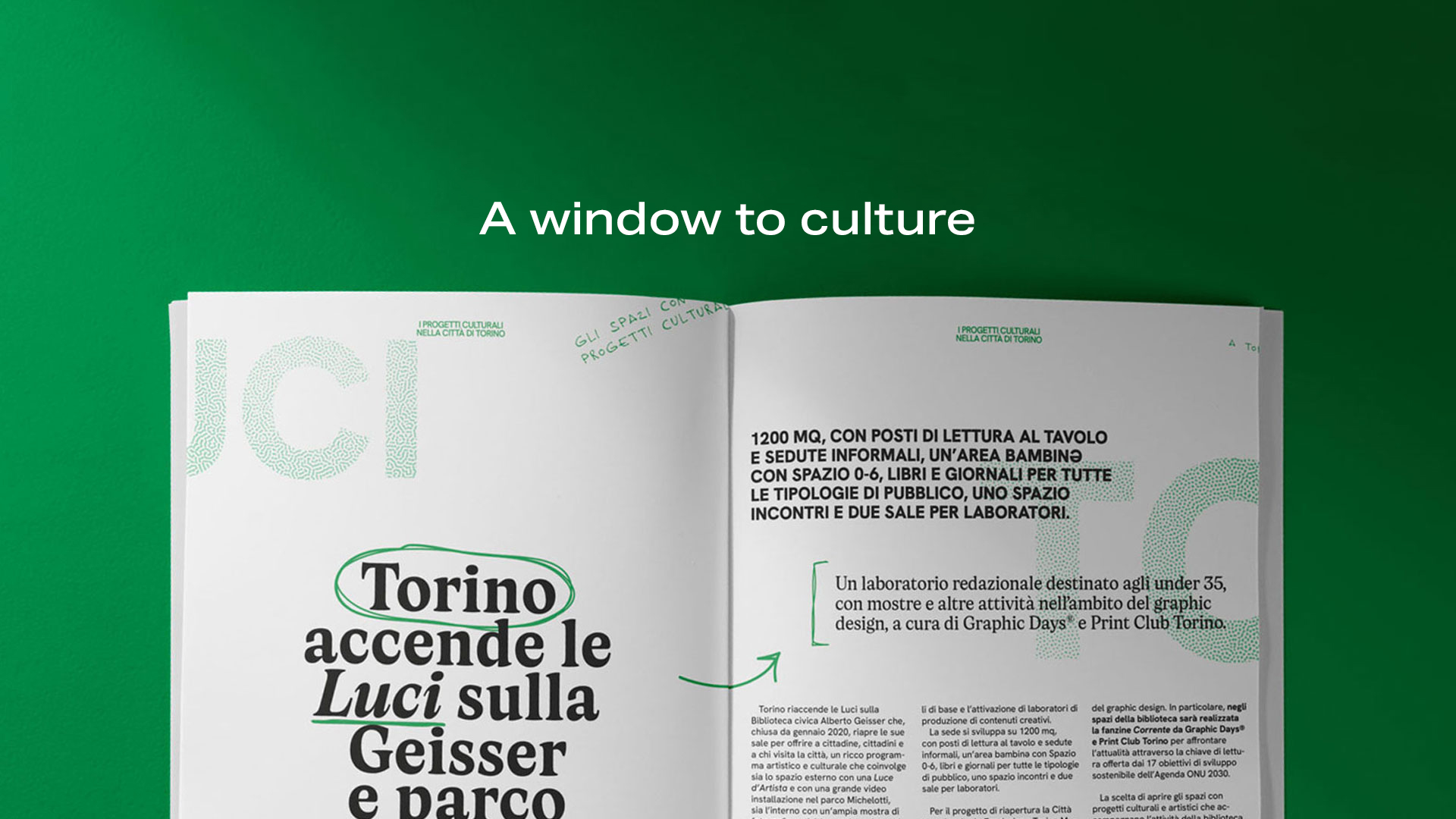
Turin turns on the lights on the Geisser and Michelotti park
Turin turns the lights on on the Alberto Geisser Civic Library which, that, closed since January 2020, reopens its rooms to offer citizens and visitors to the city a rich artistic and cultural program that involves both the external space, with an Artist’s Light and a large video installation in the Michelotti park, as well as the interiors with a large photographic exhibition, which will be followed by creative and educational activities alongside those traditionally dedicated to study, reading and aggregation.
The Geisser, as it is commonly called, is named after the Turin banker and entrepreneur of Swiss origins Alberto Geisser (1859-1929), involved in important philanthropic activities, founder of the circulating libraries in Turin and, in 1907, of the Library Consortium. It was the first decentralized headquarters of the Central Civic Library, built in a 1950s building surrounded by the greenery of Michelotti Park, once hosting the sports headquarters of the Provincial Butchers’ Association, to which the fresco by Giacomo Soffiantino is dedicated. After important energy redevelopment and renovation works, the library reopens to the public with the launch of new services in addition to the basic ones and the activation of creative content production laboratories.
The headquarters is spread over 1200 square meters, with reading places at the table and informal sessions, a children’s area with a space for 0-6, books and newspapers for all types of audiences, a meeting space and two rooms for workshops.
For the reopening project, the City involved the Torino Museum Foundation and the Foundation for Culture, with Luci d’Artista and Luca Pannoli’s work Love Does Not Make Noise in the green area overlooking the library and one of the Specials projects of Artissima 2023, which brings an important video installation by Brazilian artist Jonathas de Andrade to the facade of the building that housed the House of Giraffes and Elephants of the Former Zoological Garden. In the internal spaces of the library, starting from October 26, the basic reading and lending services of new publications and proposals for children will be accompanied by the collective exhibition All These Fleeting Perfections curated by Domenico Quaranta, produced by Exposed. Torino Foto Festival, in collaboration with Artissima. Following this, an editorial laboratory will be activated for under 35s, with exhibitions and other activities in the field of graphic design. In particular, the fanzine Corrente will be created in the library spaces by Graphic DaysⓇ and Print Club Torino to address current events through the interpretation offered by the 17 sustainable development goals of the UN Agenda 2030.
The choice to open the spaces with cultural and artistic activities that accompany the library’s activity will therefore allow us to collect requests and ideas from the public.
A new model of territorial library that arises from the path developed so far with the Suburban Transformations, Common Goods and Urban Regeneration Division and the Youth Service of the City of Turin, which wants to make public libraries more permeable, integrated and participatory, to respond to new needs and ignite new desires. The challenge is to make libraries an open cultural project, fully shared with citizens, always connected with the city.
Cecilia Cognigni
Library Service Manager
Books
Socio-social-design. Illustrated edition by Matteo Moretti, Corraini, 2019
Social Design Cookbook by Attila Bujdosó, self-produced, 2019
Plant revolution: le piante hanno già inventato il nostro futuro by Stefano Mancuso, GEDI, 2022
25 modi per piantare un chiodo: sessant’anni di idee e progetti per difendere un sogno
by Enzo Mari, Mondadori, 2011
Storia del Mediterraneo in 20 oggetti by Amedeo Feniello and Alessandro Vanoli, Laterza, 2018
Documentaries
Cas Holman: Design for Play, directed by Elizabeth Chai Vasarhelyi, documentary, 45’, 2019, Netflix
Minimalism: a documentary about the important things, directed by Matt D’Avella, documentary, 78’, 2015, YouTube, Netflix
directed by Hillman Curtis, Ben Nabors and Stefan Sagmeister, documentary, 93’, 2016, Vimeo
directed by Andrea Gutiérrez Bermejo and Miguel Larraya, documentario, 81’, 2019, Mubi
directed by Marco Proserpio, documentary, 90’, 2018, RaiPlay
NTS: Wonderful Waste – How UK Designer Turns Waste into Stylish Furniture
direted by Colin Chee, documentario, 13’, 2023, Youtube
Altri progetti

